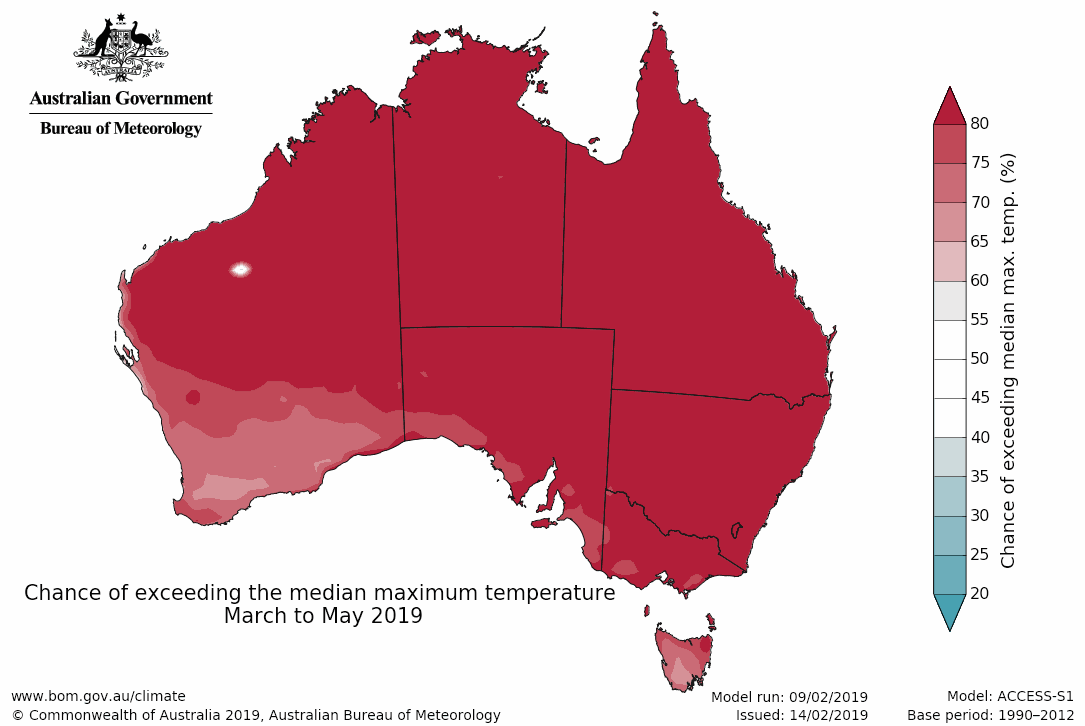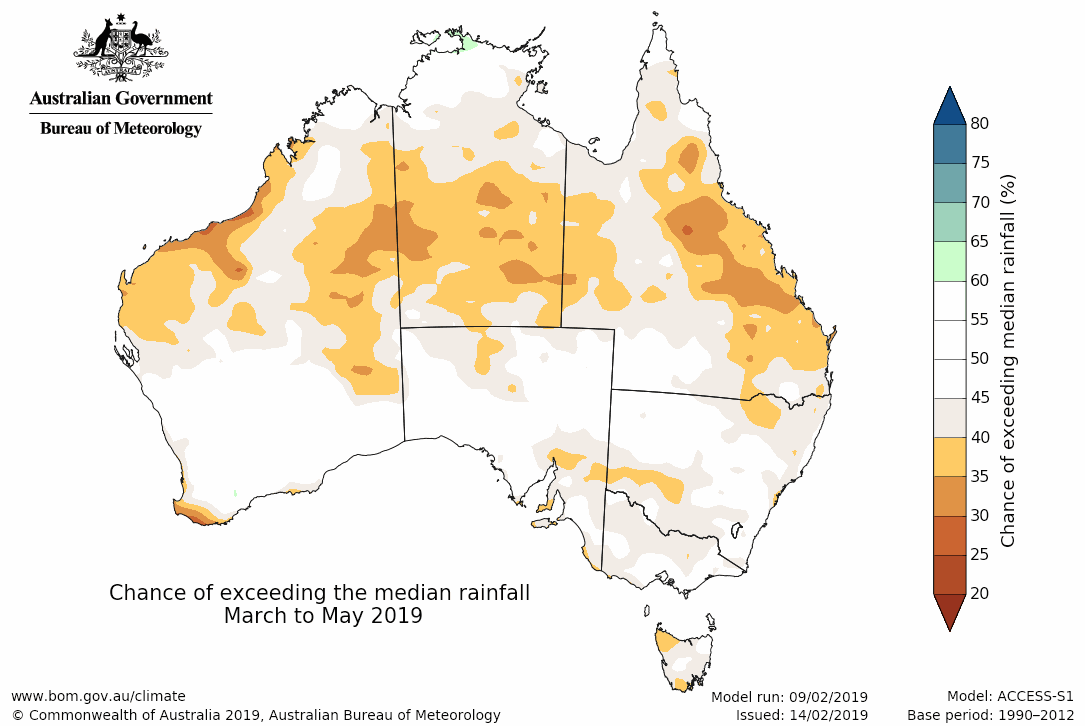Warm Autumn tipped for Australia, dry for some

The Bureau of Meteorology have issued their seasonal outlook for autumn and the picture it paints for Australia is pretty clear: warmer than usual.

When averaged across the season, both days and nights are likely to be warmer than usual for most of Australia during autumn.

Image via Bureau of Meteorology
Rainfall is expected to be below average across large areas of northern Australia, but could go either way in the nation's south.

Image via Bureau of Meteorology
This outlook follows on from record-breaking heat in Australia during the last two months and follows a longer-term trend of rising global ocean and air temperatures in recent decades.
December and January were both the warmest respective months on record for Australia as a whole. Rainfall was also about 20 percent below average in December and almost 40 per cent lower than usual during January.
So, does this outlook mean the next two months will be record-breaking as well? And just how hot will it get in Australia this Autumn?
These questions simply can't be answered yet, because seasonal outlooks aren't the same as a day-to-day weather forecast.
Whether you're planning a holiday next season or live off the land and need to plan crops, it's important to know what a seasonal outlook is - and what it isn't - before using it to shape your decisions.
The Bureau's seasonal outlook predicts of the likelihood of above or below average rain and temperatures during the next three months combined. It does not forecast temperature values, rainfall amounts and dates of individual weather events during the upcoming season.
Periods of heavy rain can still occur in an otherwise drier than average season. Likewise, cold spells are still likely to happen during warmer than usual autumns.
Seasonal outlooks are a prediction of broad-scale temperature and rainfall patterns that are most likely to occur during the next three months. When interpreted properly, they can provide valuable information about the types of weather that you might see more or less frequently.
A good analogy used by the Bureau's Andrew Watkins is that climate determines the clothes you buy, but what you wear each day depends on the weather.